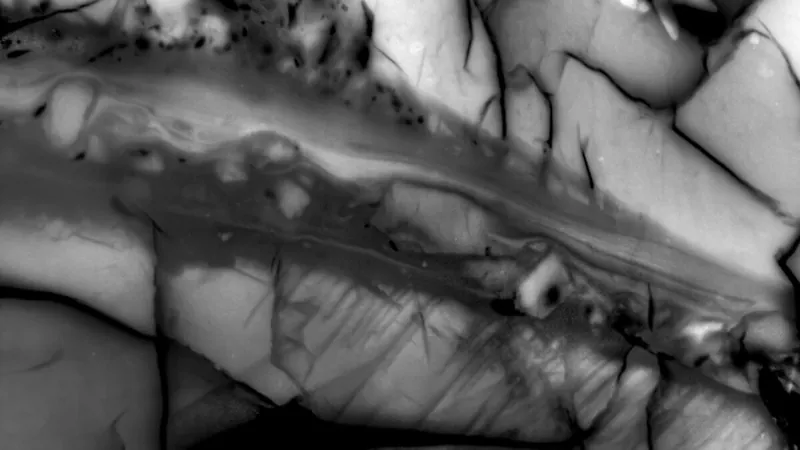
Shocking Truth: 90% of Earthquake Energy Does Nothing You'd Expect!
2025-09-16
Author: Wei
Earthquakes: More Than Just Shaking
Earthquakes are known for their potential to devastate lives and landscapes. However, recent research reveals that what we perceive as destructive shaking is just a fraction of an earthquake's true energy.
Revolutionary Experiment Unveils New Insights
In a groundbreaking study published by AGU Advances, scientists engineered miniature earthquakes, dubbed "lab quakes," to unravel the energy dynamics of real seismic events. These controlled experiments served as a simplified model of nature's fury, and the results were startling.
The research indicated that a mere 10% of an earthquake's energy is responsible for the rumbling we associate with seismic events. The overwhelming majority—between 68% and 98%—transforms into heat near the quake's epicenter. Shockingly, less than 1% is utilized to fracture rock and create new surfaces.
Understanding Earthquake Mechanics
Matěj Peč, a geophysicist at MIT and co-author of the study, emphasized the significance of this research. "Our experiments provide one of the most comprehensive views of earthquake-like ruptures, offering essential insights for enhancing earthquake models and improving natural disaster preparedness," he shared.
How They Did It: The Lab Quake Process
To simulate earthquakes, the researchers utilized granite samples to mimic the seismogenic layers of Earth's crust. They ground the granite into powder and mixed it with magnetic particles, which acted as temperature indicators. Under increasing pressure conditions that replicated natural pre-earthquake scenarios, they meticulously observed the microphysical processes at play.
They discovered that the energy dynamics evolved based on the deformation history of the rocks—essentially, the geological memory of the material.
From Lab to Real-World Application
The research team proposes that these lab quakes may closely reflect the physics underlying real earthquakes, despite the complexities of the actual Earth. Their findings open up a path to overcome the current limitations of seismological tools.
The study not only enhances our understanding of earthquake dynamics but also aids in identifying regions at heightened risk for seismic activity. As Peč aptly stated, "We must isolate and understand these fundamental processes to extrapolate them to natural occurrences."
A Step Toward Safer Futures
In an era where earthquake preparedness is critical, this research could play a pivotal role in developing better predictive models. Who knew that the majority of earthquake energy is just... heat? Stay tuned, as scientists unravel more of nature’s mysteries!







 Brasil (PT)
Brasil (PT)
 Canada (EN)
Canada (EN)
 Chile (ES)
Chile (ES)
 Česko (CS)
Česko (CS)
 대한민국 (KO)
대한민국 (KO)
 España (ES)
España (ES)
 France (FR)
France (FR)
 Hong Kong (EN)
Hong Kong (EN)
 Italia (IT)
Italia (IT)
 日本 (JA)
日本 (JA)
 Magyarország (HU)
Magyarország (HU)
 Norge (NO)
Norge (NO)
 Polska (PL)
Polska (PL)
 Schweiz (DE)
Schweiz (DE)
 Singapore (EN)
Singapore (EN)
 Sverige (SV)
Sverige (SV)
 Suomi (FI)
Suomi (FI)
 Türkiye (TR)
Türkiye (TR)
 الإمارات العربية المتحدة (AR)
الإمارات العربية المتحدة (AR)